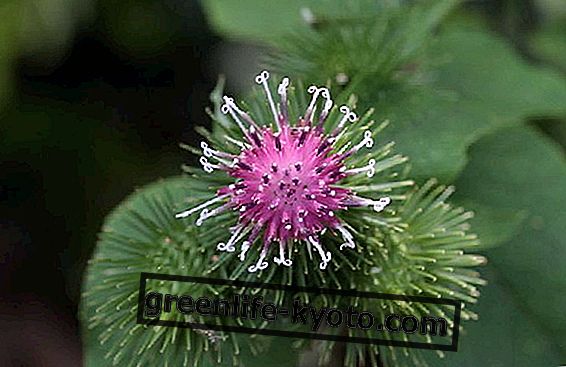
Arnica oil is an oil obtained from the maceration of Arnica montana flowers in a vegetable oil.
The ancients completely ignored this plant, since it only grows in the high mountains. As reported by the Dictionary of herbal medicine and medicinal plants of Enrica Campanini, the first to mention it for the treatment of bruises and ecchymoses is Ildegarda di Bingen (1098-1179) .
The German religious and naturalist collects the properties of about 250 plants in De arboris . Many of them, such as the arnica but also the pilosella, have been reported by her for the first time .
Arnica is a perennial herbaceous plant of the Composite family . Herbs are used in herbal medicine, completely yellow and daisy-shaped. In fact they obtain the dry extract titrated in minimum 1% rutin .
Arnica is intended only for outdoor use, mainly in the form of ointments, creams or gels, prepared with a percentage ranging from 10 to 30% of its oil .
How to prepare arnica oil
To make arnica oil serve the flowers collected in their balsamic time, ie in the heart of summer. It is indeed the heat of the sun that gives the plant its characteristic yellow-orange color .
To prepare arnica oil, first put the dried arnica flower heads in a glass jar, filling it for three quarters. Then fill the container with the sweet almond oil.
The jar should be stored for about a month in a cool, dark place . After this maceration phase , the oil is filtered .
With the help of a sieve, the oleolite is poured in order to remove the flower heads. Since all the therapeutic substances are concentrated in the flower heads, it is good to put pressure on them with a spoon.
Those who want a pure oil can proceed with a second filtering with a cotton gauze, which captures the last impurities.
Properties and benefits of arnica oil
Arnica oil is very precious because it is a natural analgesic and anti-inflammatory, which acts on the traumas of the circulatory system, muscles, bones and joints. In addition to reducing pain, it promotes the reabsorption of hematomas and edema, rapidly reducing swelling.
These properties are conferred by its high content of flavonoids, triterpenes and sesquiterpene lactones .
Its use is indicated in all situations where ice is usually used (falls, fractures, dislocations, accidents) to avoid the formation of a spill . It is also very effective on:
> muscle strains and strains;
> distortions;
> bruises;
> phlebitis;
> joint pains also characterized by inflammation and swelling;
> rheumatism;
Finally:
> thanks to its anti-inflammatory and astringent action on the circulatory system, it helps to burn and make the vessels retract in the case of varicose veins ;
> for the same reason it is also used on hemorrhoids .
You can pour a few drops of arnica oil directly on the affected area, or you can choose to dilute it further in a massage oil.
Before or after sporting activity , especially if outdoors, arnica oil is ideal for giving energy to tired and aching limbs .
Discover the essential oils to use in case of trauma and injury
Contraindications of arnica oil
However, due care should be taken because arnica can predict side effects and contraindications.
Arnica oil should only be used externally. In fact, if ingested, this plant can cause liver problems, gastritis, nausea, vomiting, enterocolitis, headache, low blood pressure and palpitations.
Even the cream for external use should not be applied to open wounds, because it causes redness and irritation. Elenaline could cause contact dermatitis in particularly sensitive individuals.













